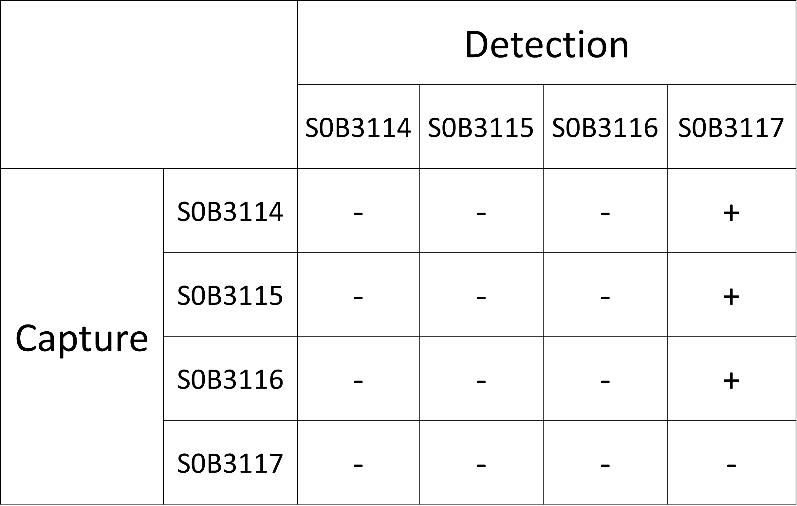Product Details
Product Details
Product Specification
| Host | Rabbit |
| Antigen | Thrombin |
| Synonyms | N/A |
| Immunogen | Recombinant Protein |
| Accession | P00734 |
| Clone Number | SDT-293-58 |
| Antibody Type | Rabbit mAb |
| Application | Sandwich ELISA |
| Reactivity | Hu |
| Cross Reactivity | Does not recognize antithromnin III. PIC complex, tPA-PAI-1 complex |
| Purification | Protein A |
| Concentration | 2 mg/ml |
| Purity | >95% by HPLC |
| Conjugation | Unconjugated |
| Physical Appearance | Liquid |
| Storage Buffer | PBS pH7.4, 0.03% Proclin 300 |
| Stability & Storage | 12 months from date of receipt / reconstitution, 2 to 8 °C as supplied. |
Dilution
| application | dilution | species |
| Sandwich ELISA | N/A |
Background
Also known as coagulation factor II, thrombin is a serine protease that plays a physiological role in regulating hemostasis and maintaining blood coagulation. Once converted from prothrombin, thrombin converts fibrinogen to fibrin, which, in combination with platelets from the blood, forms a clot. Thrombin–antithrombin complex (TAT) is a protein complex of thrombin and antithrombin. It is a marker of net activation of coagulation. TAT is formed in response to the high thrombin level caused by coagulation following a ruptured vessel. Since thrombin is rapidly bound by antithrombin, TAT is a useful measure for thrombin level in the blood. Thrombin can pass the blood–brain barrier, destroying neurons and potentially causing cerebral edemas. The half-life of TAT is approximately 15 minutes.
Picture
Picture
Paired Recommendations



